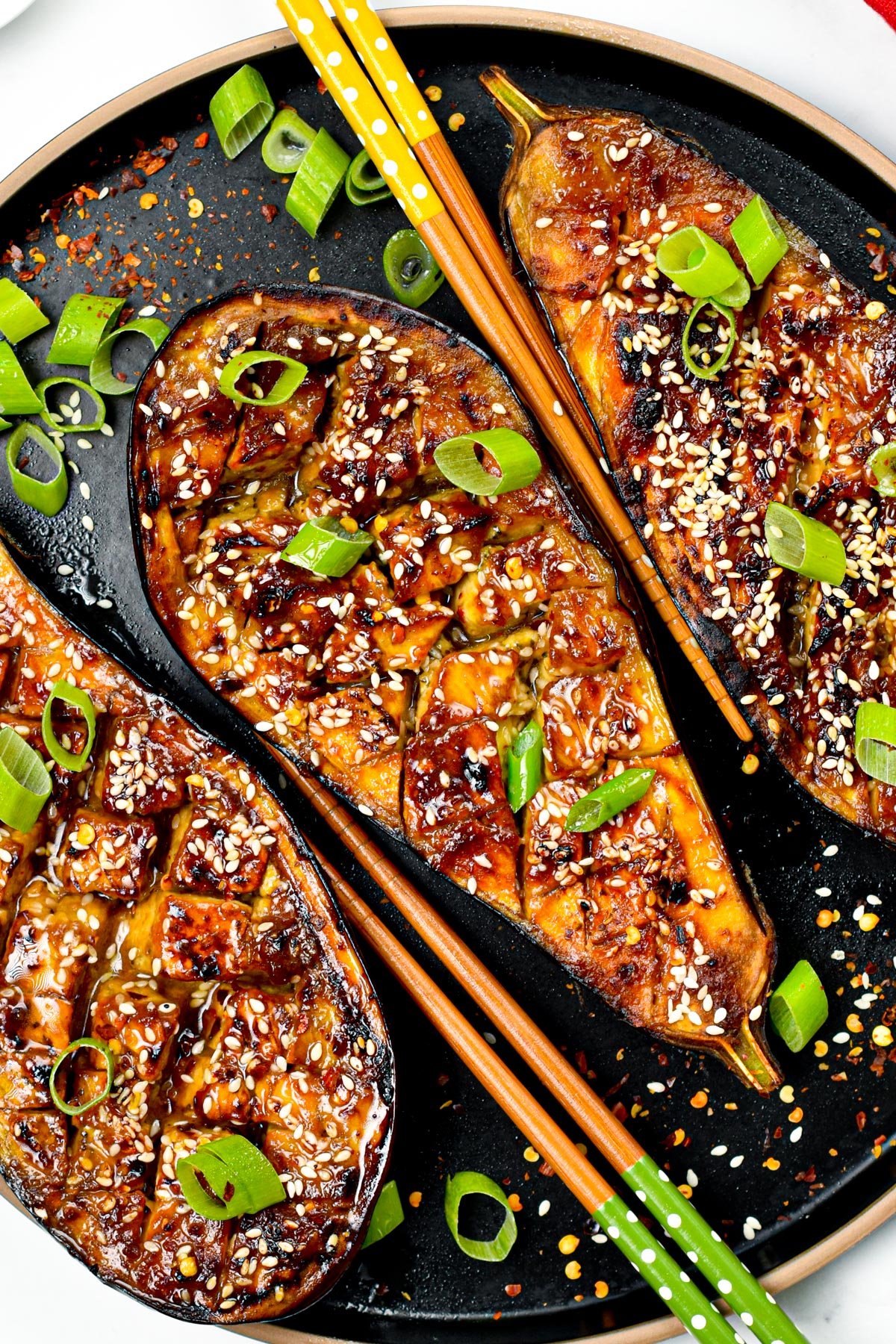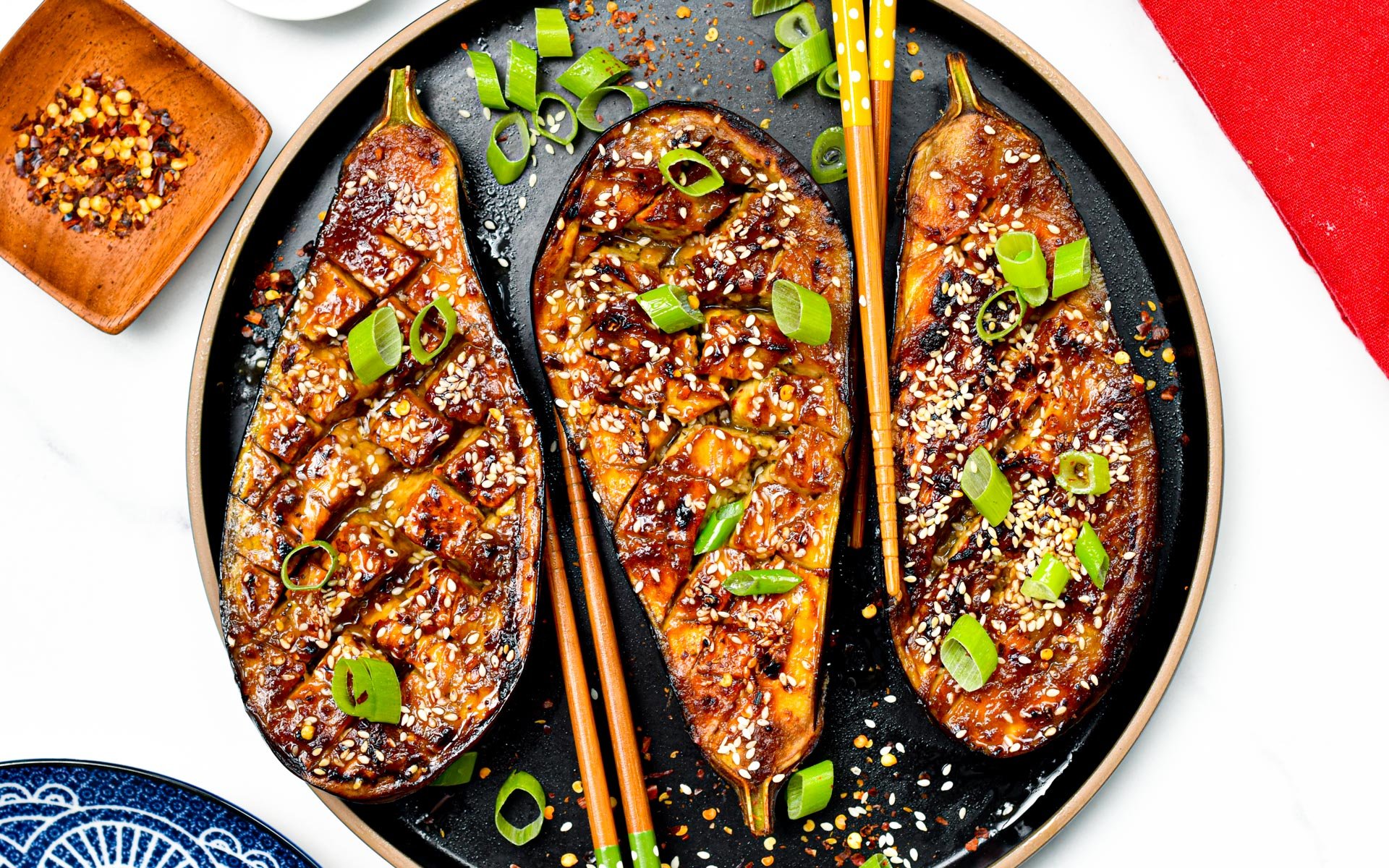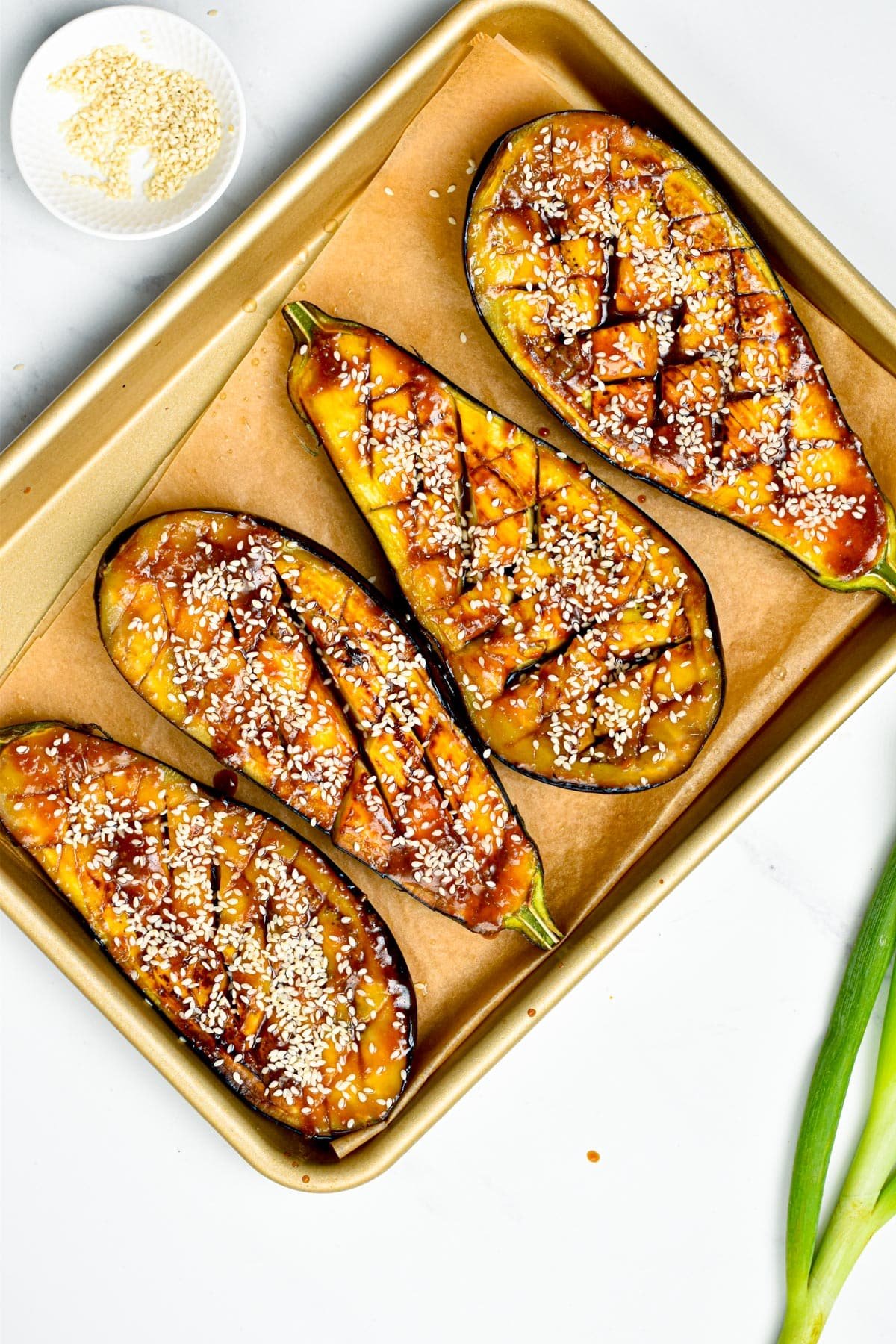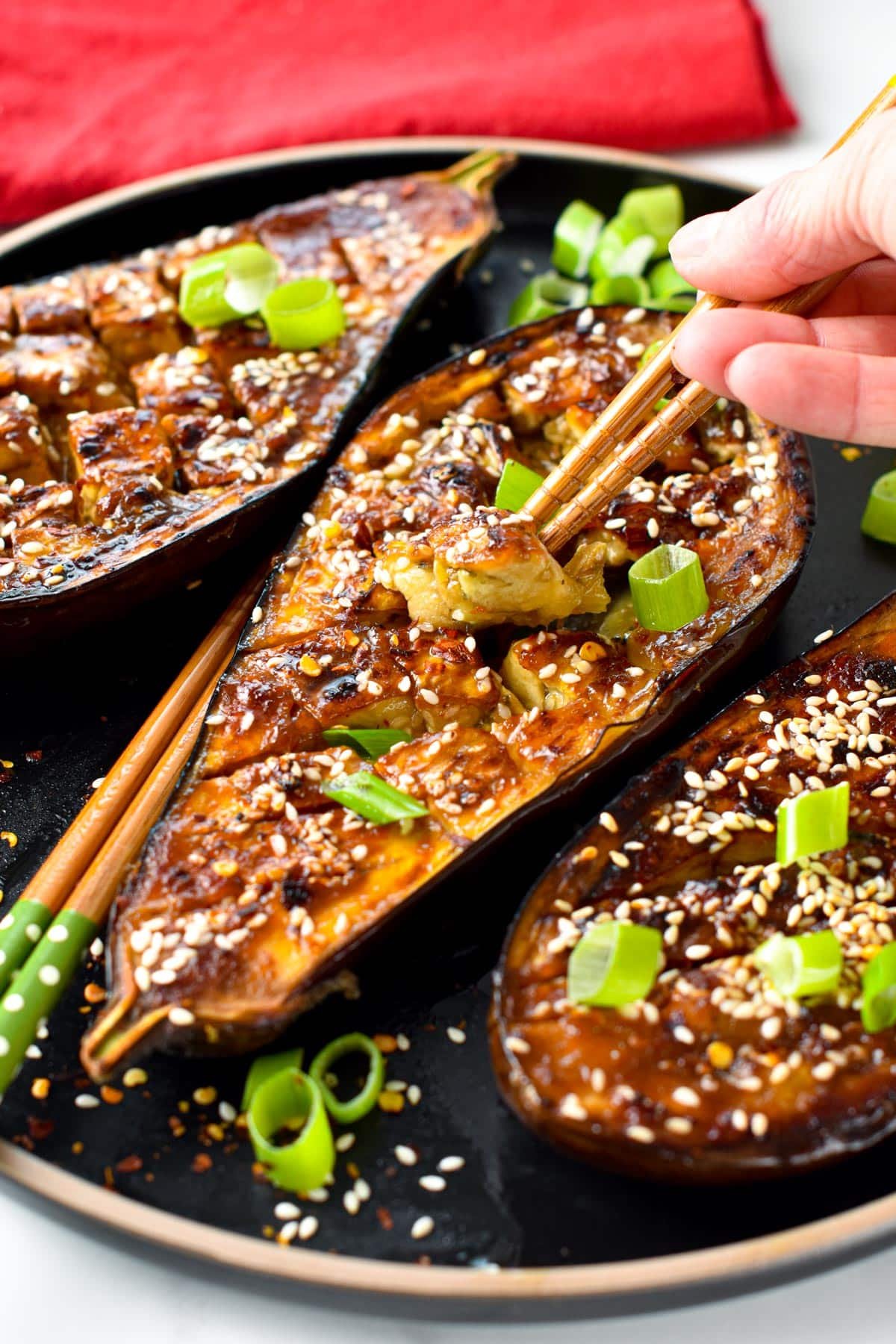Asian-inspired recipes, especially everything cooked with miso paste, are among the tastiest and most delicious recipes and I love making them! You might have tried my Crispy Orange Tofu, Szechuan Tofu, or Orange Cauliflower, they are super tasty. But if you’re not into Tofu and want more Japanese flavors, this miso eggplant is the way to go!
Why Should I Cook With Miso?
Miso paste is an excellent condiment in vegan recipes to add salty and umami flavors. Umami is one of the five primary flavors our palates recognize, and it is often associated with a meaty taste. Therefore, adding miso paste to a plant-based recipe is a tasty way to add a meat-like flavor to vegetables, pasta, and more. When miso paste meets eggplants, it turns the eggplant flesh into meat-like pieces that are moist, soft, and broiled. It turns this bland vegetable into a comfort dish that is fulfilling and packed with nutrients. So let me share with you my way of preparing miso-glazed eggplant.
Ingredients and Substitutions
Here are the ingredients you need to make miso glazed eggplant in less than 15 minutes for an easy healthy dinner.
Large Eggplants – Keep their skin on, cut them halfway lengthwise, keeping the extremity of the veggies. Brown Miso Paste – You can also use white miso paste, which has a less salty and mild umami flavor. If so, you will need more soy sauce to boost the salty taste of your glazing. Sesame Oil – Use refined sesame oil for a high smoke point that is safe for baking. Maple Syrup – or any other liquid sweetener like coconut nectar or agave syrup. Light Soy Sauce – you can take a gluten-free version if you need. Rice Wine Vinegar or sake wine. Mirin – a type of rice wine used for cooking.
How To Make Miso Eggplants
I have seen and tested many glazed eggplant recipes. However, after trying different combinations of ingredients in the glaze, I found the tastiest eggplant glazing recipe. To serve, you also need some sesame seeds and scallions.
Cooking the Eggplant
A miso glazed eggplant recipe has nothing complicated. The cooking steps of the eggplant truly matter and add all the texture to the vegetable. The cooking is in three steps.
1 – Pan-Frying The Eggplants
2 – Steaming
3 – Glazing And Broil
Serving
Remove the eggplants from the oven and serve immediately with some of your favorite Asian side dishes like:
Coconut Jasmine Rice Sushi rice Noodles
You can add some of the below herbs and spices on top of the warm glazed eggplant for a boost of flavors:
Spring onion slices Chili flakes Sriracha sauce
Storage Instructions
You can store the leftover cooked eggplants in the fridge for up to 3 days in a sealed container. You can also freeze leftovers for up to one month and thaw them in the refrigerator the day before.
Allergy Swaps
This recipe is allergy-friendly as it’s naturally:
Nut-free Vegan Dairy-free
However, if you have some more food allergies, follow the suggested ingredient substitutions below.
Seed-Free – You can replace the sesame oil with avocado oil or peanut oil. Also, replace sesame seeds with crushed peanuts. Sugar-Free – Use a sugar-free maple-flavored syrup made from natural sugar-free sweeteners like monk fruit. Brown Miso Paste – Replace with white miso paste or red miso paste and add more soy sauce to achieve the same level of saltiness. Gluten-Free – Replace the soy sauce with tamari sauce.
Here are my answers to your most frequent questions about this recipe.
More Asian Dinner Recipes








